Bluetooth low energy possibilities in healthcare
The healthcare industry has always been an early adopter of the new technologies, even though people automatically see the human body and mind as somehow distinct from the hard machinery of science and engineering. From the first surgical tools and prosthetic limbs to more recent innovations, like MRI scans, heart pacemakers and wearable monitoring devices, that trend of rapid technology adoption continues.
By combining the extreme miniaturisation enabled by semiconductor fabrication with advances in complementary fields, such as advanced materials and batteries, we can now place powerful technology almost anywhere we want. Medical devices that used to be wired can now be made portable or even wearable enabling new application uses. The final link that ties them all seamlessly together, and makes the whole greater than the sum of its parts, is ‘wireless.’
What we’ve just described fits broadly under the banner of the Internet of Things (IoT). IoT brings the network effect to healthcare, creating entirely new applications for diagnostic and monitoring equipment in healthcare facilities, and creating new opportunities for care in the home environment.
There are numerous wireless protocols jockeying for position in the IoT market. Each technology offers varying strengths in a range of critical requirements: bandwidth, range, and power usage. While there is a part to play in healthcare for several different wireless protocols, the mature and robust wireless technology which seems perfect for very wide use in medical applications is Bluetooth.
It’s important to realise that features like low power consumption, robustness (frequency hopping), low cost, and wide‑spread technology availability (large ecosystem) really start to come into their own in a medical IoT scenario. Bluetooth Low Energy (BLE) complements longer‑range wireless technologies, and makes optimum use of available frequency spectrum for applications that do not require extended range. It is suitable in that it is mobile, robust and has an established ecosystem in standard mobile devices.
Use case possibilities
Medical care is costly, often relying on expensive, equipment and facilities, and highly‑trained staff. If healthcare can use those human and physical resources more efficiently, then there's great potential for cost savings, particularly by reducing expenditure on routine tasks. Bluetooth low energy is a useful technology in that process. Let’s look at some potential applications:
Connected home health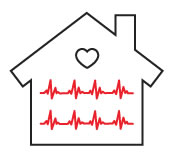 The IoT makes it possible to reap enormous savings, increases in efficiency, and improvements in patient comfort, by moving significant areas of patient care out of hospital wards and into the home. It’s becoming possible to monitor patients’ health wherever they are. Monitoring devices such as medical weight scales, heart rate monitors and blood pressure monitors can track health and alert patients, families and caregivers to changes in vital signs, or missed medications.
The IoT makes it possible to reap enormous savings, increases in efficiency, and improvements in patient comfort, by moving significant areas of patient care out of hospital wards and into the home. It’s becoming possible to monitor patients’ health wherever they are. Monitoring devices such as medical weight scales, heart rate monitors and blood pressure monitors can track health and alert patients, families and caregivers to changes in vital signs, or missed medications.
The low power, robust and ease‑of‑use characteristics of Bluetooth low energy are suitable for linking multiple monitoring devices to a local hub (like smart phones) which uses longer range communications technologies to send data securely over the internet for analysis by caregivers Such devices can potential operate for years on a single tiny battery.
For ease‑of‑use, some Bluetooth low energy hardware, such as the u‑blox NINA‑B1, support an optional time‑saving pairing method called Out‑Of‑Band pairing (OOB) in which the two devices just have to be moved close together to achieve automatic secure pairing.
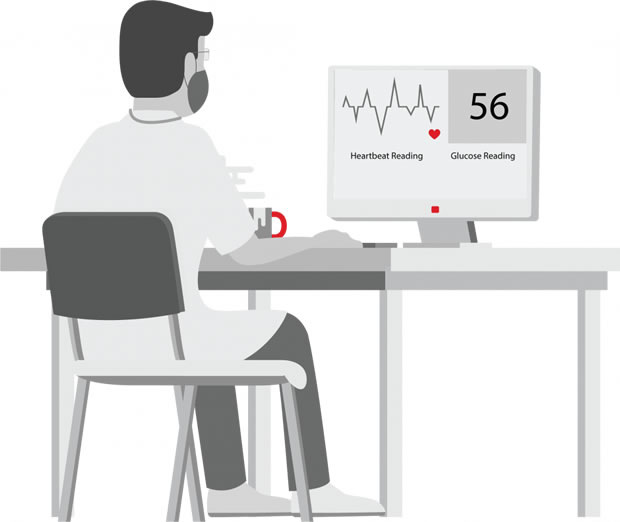
Connected medication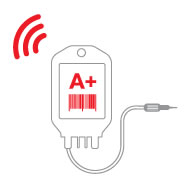 Hospital patients are often connected to multiple healthcare devices. Simply doing away with wires provides profound benefits, saving staff time, reducing risk of error, and making patients more comfortable. Electrocardiography (ECG) monitors and blood pressure sensors can transfer vital sign data wirelessly to the hospital’s central monitoring systems.
Hospital patients are often connected to multiple healthcare devices. Simply doing away with wires provides profound benefits, saving staff time, reducing risk of error, and making patients more comfortable. Electrocardiography (ECG) monitors and blood pressure sensors can transfer vital sign data wirelessly to the hospital’s central monitoring systems.
In a typical hospital application, a nurse uses a lightweight handheld scanner to scan a patient’s wrist barcode, and the scanner contacts the patient’s infusion pump via Bluetooth to identify the patient. With oversight from the hospital’s central monitoring system, input from wearable monitors on the patient, and other safeguards, the infusion pump can then provide the correct fluids and timed medication to that patient.

Connected inventory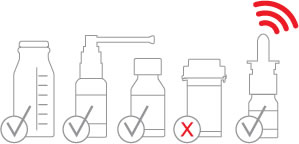 Real‑time blood bank monitoring is another attractive application. Blood must be stored within a certain temperature range, or it may not be safe for use. Each blood bag is tagged with a tiny re‑usable tracer that tracks the temperature via a Bluetooth low energy module.
Real‑time blood bank monitoring is another attractive application. Blood must be stored within a certain temperature range, or it may not be safe for use. Each blood bag is tagged with a tiny re‑usable tracer that tracks the temperature via a Bluetooth low energy module.
The sensor spends most of its life sitting quietly on the shelf in sleep mode, but is programmed to wake up when it detects physical movement. It indicates the validity of the blood via a LED and advertises its presence via Bluetooth low energy.
It then sends collected environmental data to a smartphone or a Bluetooth gateway. A tailored app can calculate the remaining storage time for the blood based on the logged temperatures stored in the sensor.
Bluetooth low energy is suitable for this use case, as it is supported by smartphones and tablets and it provides reliable wireless connectivity with the lowest power consumption. Also, Bluetooth low energy can be used to quickly keep track of location of blood bags.
Similar use cases can also be seen in other inventory applications tracking other inventory, equipment and staff.
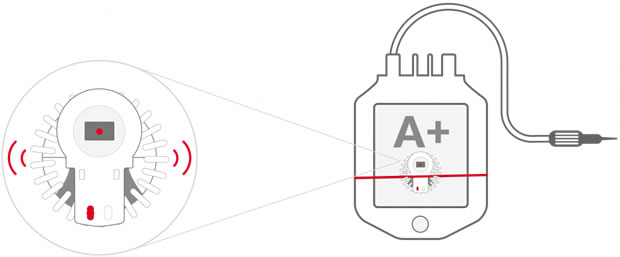
Connected monitoring
As paramedics treat a patient in an ambulance on the way to hospital, the defibrillator can use Bluetooth low energy to send real‑time information about the patient’s status to a gateway inside the vehicle. This information is automatically transferred to the defibrillator manufacturer’s cloud service. Hospitals can subscribe to this service to be better prepared when the patient arrives at the ER.
Obviously, a similar process of real‑time information gathering can also be used with other equipment in ambulances.
Implementing Bluetooth low energy in healthcare
At u‑blox, there is years of experience with Bluetooth, so it can be confidently shown that the NINA‑B1 series of dedicated stand‑alone Bluetooth low energy modules is worth a serious look if you’re developing medical applications and devices – whether they require occasional connectivity or are part of an active network or IoT‑style system.
They facilitate a small footprint device with responsive, high‑performance hardware and an open CPU architecture. The open environment makes it easy to develop connected IoT products and connect sensors, and it provides the option of using the u‑blox module as the host controller. Unlike hybrid devices, the NINA‑B1 is dedicated to Bluetooth low energy, ensuring it gets the most from the specification, with no wasted space or power.
u‑blox modules are ‘medical ready’ which means every module has been developed under a Structured Product Life Cycle Process (PLCP), tested to simulate years of field operation and identify failure mechanism, and manufactured in a fully automated facility where every module is tested and tuned to support the u‑blox zero defect policy and full traceability.
The modules are also all certified for a range of countries, eliminating the need for end product manufacturers to do so.
Learn more in the white paper Use cases and Regulatory Approvals for Wireless Medical Devices.
By Pelle Svensson, Market Development Manager, Product Center Short Range Radio, u-blox.
Courtesy of u-blox.











